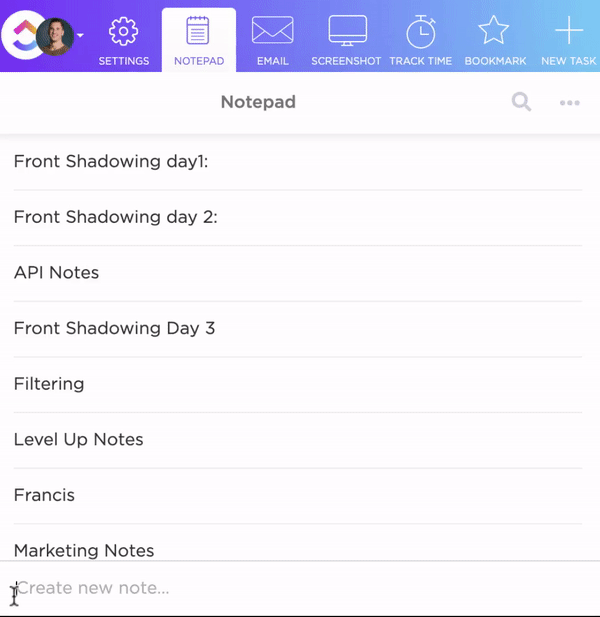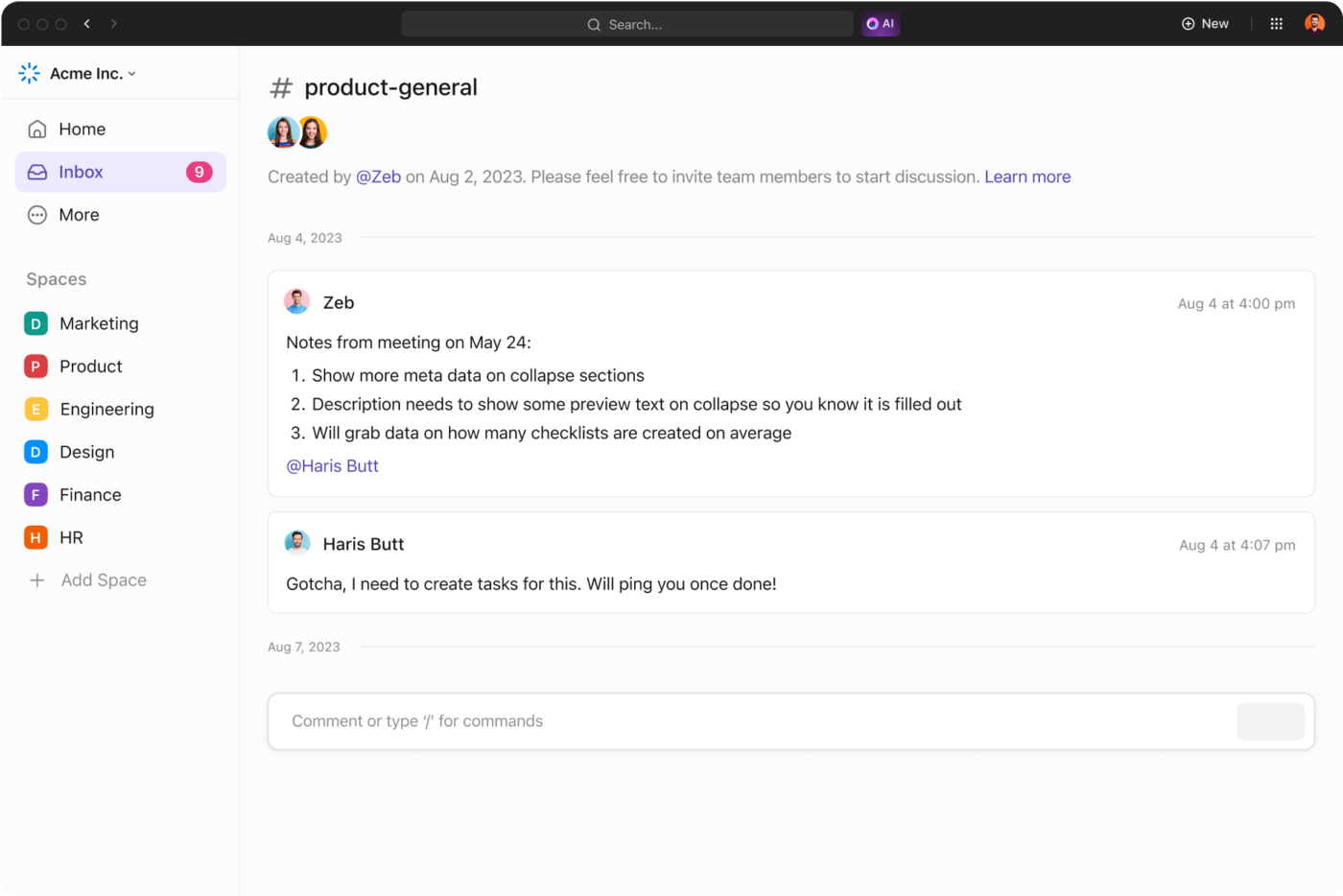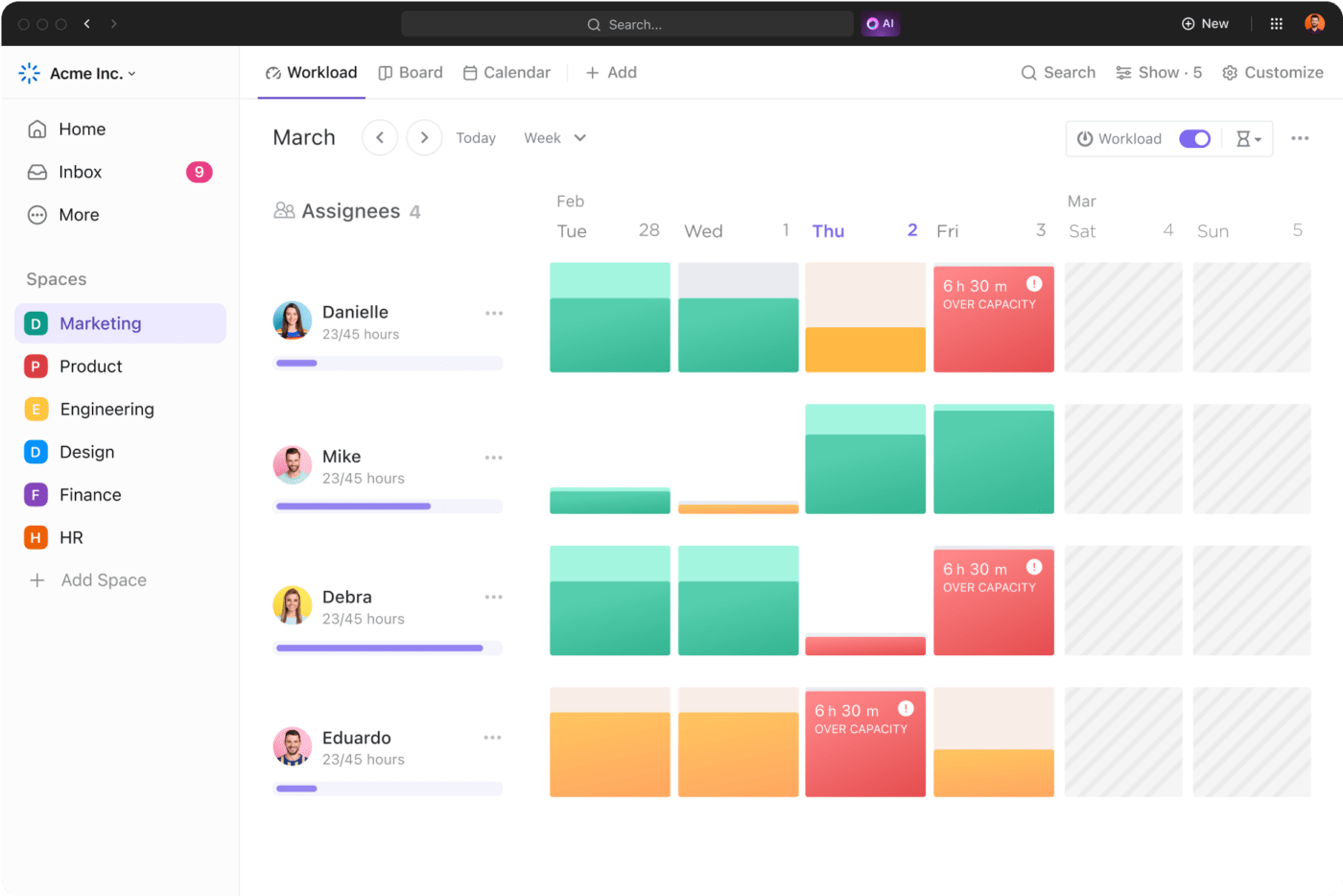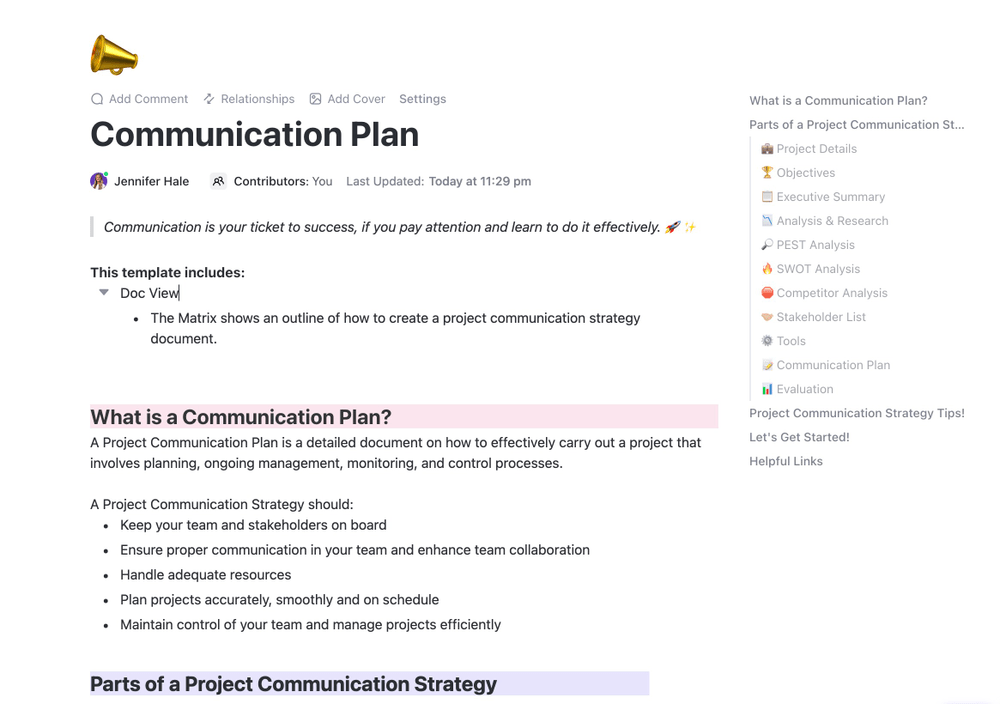

Have you ever been stuck in a sticky workplace situation where a conversation feels challenging? That’s what we call a difficult conversation—a chat that’s tricky, awkward, and sometimes downright uncomfortable. It could be about performance reviews, conflict resolution, layoffs, workplace discrimination, or ethical dilemmas.
Our first instinct is to avoid having these difficult conversations at the workplace. However, avoiding these conversations will not make them disappear and may worsen the situation.
These difficult conversations will help ensure work is on track, promote understanding and teamwork, solve problems, and share feedback.
Most employees avoid difficult conversations because they don’t know how to navigate them. That is why we have compiled a comprehensive guide on how to have difficult conversations at work.
How to Identify the Right Timing to Have Difficult Conversations at Work?
Identifying the right timing for difficult conversations is essential for effective communication and resolution. Here are some tips to help you recognize when to initiate these discussions:
- Notice patterns: Keep an eye out for recurring issues or behaviors that impact productivity, morale, or teamwork
- Assess impact: Evaluate the severity of the situation and its potential consequences for individuals or the organization as a whole
- Consider emotions: Pay attention to cues such as frustration, tension, or avoidance. These may indicate underlying issues that need to be addressed
- Determine readiness: Determine if all involved parties are in a suitable mindset to engage in a constructive conversation
- Select the right timing: Select a time when everyone involved can focus without distractions and when emotions are relatively stable
- Prioritize privacy: Choose a private setting to ensure confidentiality and encourage open communication without fear of judgment or embarrassment
- Monitor workload: Avoid discussing sensitive topics during peak workload periods or high-stress moments
- Review policies: Familiarize yourself with company policies regarding conflict resolution and communication protocols to ensure compliance
- Seek guidance: If you cannot determine the timing or how to handle a difficult conversation, consult your HR or a supervisor for support
Remember all these points, and do not wait too long for the conversation. Avoiding or waiting long for a tough conversation can make the problem worse. Therefore, prepare yourself and dive into the conversation.
Common Workplace Conversation Challenges
Communication and collaboration in the workplace has its fair share of challenges. Let’s discuss some of them:
Passive listening
Passive listening is one of the most common challenges in workplace conversations. It means hearing what someone is saying without understanding it.
A conversation is incomplete without all the involved parties trying to understand and empathize with each other, which can lead to misunderstandings and friction.
Therefore, remember your communication goal and practice active listening by giving full attention to the speaker before beginning a difficult conversation.
Cultural differences
Today’s workforce is more diverse, with employees, management, and clients spread worldwide. This cultural diversity can lead to communication barriers, misunderstandings, and conflicts arising from different norms, values, and communication styles.
You can manage these differences by promoting open dialogue and fostering cultural sensitivity. Grouping people from different backgrounds can help them collaborate and get to know each other.
Power dynamics
Power imbalances between supervisors, managers, and employees can hinder open communication and transparency. It can also create a fear of speaking up or expressing dissenting views.
To manage power dynamics, it is crucial to help employees feel empowered to voice their opinions and concerns. Encourage open-door policies, regular feedback sessions, and leadership transparency.
Missing the right time
Many companies often miss the right time to have tough conversations, resulting in bigger misunderstandings. Addressing issues and sharing information at the right time in the proper manner is one of the most effective communication strategies.
This ensures your employees are always up to date with company happenings and get the chance to resolve conflicts quickly.
Lack of interest
It is impossible to take it forward if a person is not interested in the discussion, addressing, or resolving conflicts. The other person is also more likely to ignore your message.
Some reasons behind it can be disconnection from the topic, perceived irrelevance, or low motivation. You can clarify the purpose of the conversation and use workplace communication tools to battle this disinterest.
10 Tips on How to Have Difficult Conversations at Work
Here are 10 tips to help you successfully hold tough conversations at work.
1. Don’t procrastinate
We’ve said this before, and I’ll repeat it again: don’t avoid difficult conversations. The more you avoid them, the higher your chances of building resentment and anxiety. Therefore, face the situation head-on, whether it’s a conflict or a poor performance.
Find the right time to have the conversation. Check the involved people’s schedules, workloads, and readiness. Choose a time when you think the participants can manage their emotions.
Try to schedule the session as soon as possible. This will prevent the issues from becoming more significant and improve the situation quickly.
2. Prepare beforehand
The words you use during a tough conversation matter a lot. Therefore, do not do it on the spur of the moment. Take some time to prepare before diving into the conversation.
Start by hashing out what you want to achieve and the purpose of the conversation. Write down the goals, prepare supporting documents or evidence, and document the conflict in writing. Jot down talking points on an easy-to-access notepad to refer to during the conversation.

Also, consider all the possible outcomes of the conversation. You can identify the emotions connected with it and the best way to approach it. This will help you prepare for the best and worst outcomes and handle them with composure when they happen.
3. Be specific and focus on facts
While preparing for a difficult conversation, it is best to be specific and focus on facts. Try to separate your emotions from the situation to eliminate assumptions and projections.
This will help you list down the facts of the situation. Take responsibility for your part, identify the impact of conflict, develop your strategy, and collect evidence.
Make the purpose of the conversation specific and clear. Be direct but polite. However, remember that while you may leave your emotions out of the conversation, the other person may not do that. That is why you should prepare beforehand to manage any emotional responses.
4. Develop trust
Trust and mutual respect enhance collaborative communication and teamwork. Challenging conversations are inevitable. Therefore, the foundation to hold one should be built from the beginning.
Hold regular feedback exchanges and one-on-one sessions with employees to encourage open and honest communication. This will make it easier for them to approach you for conflict resolution and more open to receiving feedback.
Another essential aspect to consider while holding tough conversations (or any conversation, for that matter) and developing trust is the physical environment. Don’t choose a public place for discussion. You can instead use your office, a neutral location, or a virtual meeting.
5. Aim for understanding and empathy
When having a difficult conversation, aim to be honest but also kind. If you’re working on conflict resolution, remember that conflict usually results from not seeing eye-to-eye and misunderstandings.
Therefore, it is crucial to be understanding and give the team member space to share their perspective. Reassure them that you aim to resolve the situation.
If you are about to give negative feedback to your employees, try to be empathetic and compassionate. Imagine how it feels to be that employee and manage the conversation accordingly.
If they get emotional, try to reassure them. Take appropriate pauses to give them time to collect their thoughts. The idea is to be mindful of the other person.
6. Use ‘I’ statements
Using ‘I’ sentences helps you share your concerns and experiences without sounding defensive or blaming others. Take this, for example:
The first statement focuses on blame, while the second expresses personal feelings and discusses the impact. The first is critical feedback, while the second is constructive feedback.
Therefore, communicate your views positively using first-person language. This will help you get your points across clearly without accusing the other person.
7. Actively listen
A crucial part of understanding another person’s perspective is actively listening when they speak. This involves fully concentrating on what is being said, understanding the message, and responding thoughtfully.
Aim to understand what they’re saying instead of just focusing on immediately responding. Ask questions in case of confusion. You can also paraphrase what they’ve said in your own words for better understanding.
Listening helps you build trust, resolve conflict, understand team dynamics, and develop better relationships. You can practice active listening by giving undivided attention, listening without interrupting, reflecting, validating emotions, and asking clarifying questions.
8. Brainstorm solutions
The hallmark of a successful conversation is its ability to decide the path forward. Try to wrap up all difficult workplace conversations by reaching a productive solution.
Whether the conflict is between team members due to different working styles or an employee’s poor performance, you must develop an action plan to improve the situation. Take the time to brainstorm solutions and find common ground.

If your team member is going through a tough time, offer help and support wherever you can. You can also bring in other team members (as long as all parties agree) to discuss solutions.
Make a written plan and create a timeline to track the progress. It is crucial to set measurable goals with specific directions.
9. Follow up
Imagine ending a conversation on the best possible note. You pointed out the issues and worked out solutions, and everything was great. Until, one day, it’s not. Many people tend to rewind conversations to process them better. This may cause delayed reactions and feelings of frustration or embarrassment.
Therefore, remember to create a follow-up plan to check with them regularly. You can schedule informal meetings, like virtual coffee meetings, to catch up on work and gauge their reaction. You can also go to formal meetings to check their progress.
10. Know when to involve the HR department
Managing challenging conversations in a work environment is a must-have skill, whether you’re a leader or an employee. However, knowing when to involve the department HR or your manager is also essential.
It is best to involve the HR team if your conversation involves policy violations or critical matters. You can also involve the HR team if the conflict is escalating, there are allegations of misconduct or legal violations, or during sensitive discussions.
Share the exact situation with the HR team beforehand and clarify your role in the conversation. An HR representative will act as an impartial mediator during the conversation, preserving confidentiality and protecting the interests of all parties.
Set Your Team Up for Success
Difficult conversations and issues are inevitable in the workplace. While you cannot stop them from happening, you can most certainly reduce them. Here are some tips to avoid issues at work:
Foster open communication
Encouraging transparent and honest communication between team members, supervisors, and leadership can help avoid conflicts. Motivate your team to speak up and address issues candidly.

Create channels for feedback, suggestions, and concerns to be shared openly and constructively. Use a streamlined tool to hold conversations so everyone stays updated with recent happenings.
Provide opportunities for regular feedback and discussions. You can hold team meetings to discuss views or catch up with each other. You can also set up automatic feedback forms so everyone can share their feedback quickly.
Set clear expectations
Another helpful way to avoid issues is to set clear expectations and boundaries. Communicate roles, responsibilities, and performance expectations to all employees. Also, guidelines for behavior and communication should be established.
Ensure everyone understands their duties and objectives to minimize confusion and misunderstandings. Further, be transparent and direct while setting expectations. This will prevent any ambiguity or conflicts.
Use templates
Use communication plan templates to outline strategies and objectives for all organizational communication. These templates specify the types of messages, ways, and frequencies of communication, and target audience.
ClickUp’s Communication Plan Template has everything you need to streamline your communication process. It gives your team a clear plan for consistent internal and external communication.
You can organize objectives, timelines, and stakeholders for communication, list the most effective channels, track and measure your success, and organize your strategy.
Provide training
Invest in continuous training and skill development opportunities for employees to enhance their knowledge, capabilities, and interpersonal skills. Offer training on conflict resolution, effective communication, and diversity awareness to help them navigate workplace challenges successfully.
You can also encourage cross-functional collaboration, team-building activities, and shared goal-setting to foster camaraderie and mutual respect among employees.
Leverage collaboration tools
Use collaboration tools to enhance communication and foster a transparent work environment. ClickUp is a powerful collaboration tool designed to streamline organizational project management, communication, and teamwork.

Its comprehensive features and intuitive interface make it an effective platform for preventing work conflicts and promoting transparency and accountability. ClickUp for human resource teams simplifies people management and creates a central information hub.
Here’s how you can leverage ClickUp:

- Leverage ClickUp’s 15+ unique views, including Workload View, to distribute tasks efficiently
- Integrate your favorite apps and bring all your work under one roof with ClickUp’s over 1,000 integrations
- Assign comments as tasks from ClickUp Docs and Whiteboard
- Communicate and keep everyone on the same page using ClickUp Chat View
- Brainstorm ideas and solutions with the ClickUp Whiteboard
- Document processes and collaborate in real-time using ClickUp Docs
- Stay on track to meet your goals with real-time reporting
Level Up Workplace Communication and Transparency with ClickUp
Difficult conversations are not barriers but gateways to deeper understanding and stronger relationships. Mastering the art of difficult conversations is a necessary skill that helps build healthy relationships, promote growth, and drive organizational success.
With these tips, you can successfully navigate the complexities of workplace communication, from setting the stage with clear objectives to practicing active listening and empathy.
Leverage the power of collaborative tools like ClickUp to amplify the effectiveness of these strategies. ClickUp offers a centralized platform for transparent communication, streamlined task management, and proactive conflict resolution. Sign up for free!



Questions? Comments? Visit our Help Center for support.